
Arriving at the Eternal Now
Lori Green, January 10, 2018

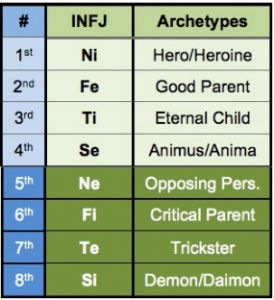
Then comes the fifth essence, which is not another additional element, but is, so to speak, the essence of all four and yet none of the four; it is the four in one. To the four comes a fifth thing which is not the four but is something beyond them and consists of them all. That is what the alchemists called the fifth essence, the quintessentia or the philosopher’s stone. It means a consolidated nucleus of the personality which is no longer identified with any of the functions. This is a stepping out, so to speak, of identification with one’s own consciousness and with one’s own unconscious, and dwelling, or trying to dwell, on this middle plane. From then on …one moves without movement, runs without running (currens sine cursu, movens sine motu). (pp. 78-79)
Tracking the character of Banks, Arrival illustrates such a phenomenon, giving life to a new space-time sensibility. This paradigm shift ultimately requires humans to become active participants in an awakening consciousness, a frontier courageously navigated by the INFJ nature.
A Singular Woman

Banks’ life is then viewed as a series of present, past, and ultimately future moments through which her auxiliary function of extraverted feeling (Fe) is revealed. She has a lover (perhaps her husband) and a daughter, who is shown at various stages of growth, connecting deeply and lovingly with her mother. For an INFJ, extraverted feeling is in the second position, in Beebe’s model the archetypal good parent. Extraverted feeling in the parent position “often naturally focuses on how to care for the feelings of others” and “can manage relationships in a nurturing way without being obvious or overt” (Shumate, 2017, p. 126). Indeed, Banks displays a quiet naturalness with her daughter, neither withholding nor infringing. Banks then appears to lose her daughter to an incurable illness and is grief-stricken. While she continues teaching linguistics at the college level, her sadness is palpable, though she does not appear to have completely shut down emotionally. Her dominant introverted intuition (Ni) quite possibly lends her a greater capacity to bear such an emotional trauma. Of Ni types, Haas and Hunziker (2014) noted “an understanding that all things are interrelated in ways that are often intangible and perhaps even unknowable” (p. 68). Because Banks readily grasps underlying connections and meanings, including unconscious material, she is more at home in circumstances larger than herself, death included. While her emotion may still be raw, she perseveres in navigating this new sea she has been plunged into, a harbinger of another otherworldly immersion Banks is about to face.
Cosmic Calling

Banks quickly learns that her heroic Ni will not be sufficient on its own to deal with the mounting tensions. Truly, she is on a collision course with the inferior function whether she is ready or not. As alien spacecraft land in various locales across the globe, public panic ensues, and the television news broadcasts a growing military response. Banks’ reaction, though sober, is also colored by curiosity. Returning to work amidst the ongoing crisis, she finds the campus deserted. Alone in her office, Banks is unexpectedly interrupted by Colonel Weber, someone with whom she worked indirectly on an insurgent translation two years prior. She bristles at the memory of the military action taken but learns that Col. Weber is again enlisting her translation help, this time regarding the alien communication. Weber clarifies he is also reaching out to Banks’ linguistic rival at Berkeley. While we do not learn a lot about Col. Weber’s type, it is safe to assume he possesses a healthy command of his extraverted thinking (Te) capabilities, which can be experienced as a take-charge attitude. Te for Banks is expressed in her trickster archetype, which often presents in mischievous ways.
This certainly proves the case, as Banks uses her trickster in service to her own cause. As she sets terms with Col. Weber, she challenges him to ask the rival linguist what the Sanskrit word for “war” is, as well as its translation; Col. Weber replies “Gavisti” in response to Banks’ test, adding that her rival said it means “argument.” Knowingly, she counters with the correct meaning: “a desire for more cows” (Heisserer, 2015, p. 16-17). Her rival has fallen into the trap she had set, revealing his limitations as a linguist, and Banks has sealed her position on the team. Shumate (2017) noted that one with Te in the trickster position “can learn to trick others into doing one’s will by subterfuge” (p. 120). Similarly, regarding interactions with extraverted thinking in others, Shumate (2017) added that an INFJ “may view them as aggressive bullies or mindless bureaucrats” (p. 120). Banks will often experience the military mindset at large in this fashion. Haas & Hunziker (2014) said that introverted intuitives “[have] little regard for authority [and] they decide for themselves whether or not rules and regulations make sense and should be followed” (p. 67). Banks is not easily rattled or pressured. In many ways, the film arguably juxtaposes the INFJ with the more culturally common extraverted thinking displayed by the American military.
In addition to engaging her trickster, Banks is quickly challenged with facing her inferior function, extraverted sensing (Se), which “moves freely through the physical environment seeking sensory stimuli to understand and interact with the world” (Shumate, 2017, p. 102). By way of illustration, Banks is now paired with Ian Donnelly (played by Jeremy Renner), the theoretical physicist she will be working with in “the shell,” the name for the UFO. Almost immediately, Banks and Donnelly become spirited, though good-natured rivals. A strong case can be made for Donnelly’s typology as an ESTP, an extraverted sensing type with introverted thinking represented emphatically in his second position. In this case, Banks’ dominant Ni is mirrored in Donnelly’s inferior positon and Donnelly’s superior Se is reflected back in Banks’ inferior position. The film is swiftly taking us into the rich domain of the gifts of the inferior function, and Banks and Donnelly suddenly find themselves at the very threshold of consciousness. In the words of von Franz (1971/2006), “To be crucified between the superior and the inferior functions is vitally important” (p. 46). Alarmingly, their ability to integrate the unknown at this level will contribute to their ultimate success or failure. Time is of the essence, and the inferior function’s likely resistance to assimilation will prove daunting.
Embracing the Inferior
Jung (1921/1971) illustrated a link between Ni and Se that can be applied to the dynamic between Banks and Donnelly, respectively. He remarked that “introverted intuition perceives all the background processes of consciousness with almost the same distinctness as extraverted sensation registers external objects. For intuition, therefore, unconscious images acquire the dignity of things” (CW 6, ¶ 657). This distinction is alive in the ways Banks and Donnelly each experience their first encounter with the shell and the “heptapods,” the name given to the octopus-like creatures they meet. Banks, though overall supple in her responses to unknown experiences, is nevertheless thrust into her inferior function—what von Franz (1971/2006) refers to as the “ridiculous and unadapted part, but also that part which builds up the connection with the unconscious and therefore holds the secret key to the unconscious totality of the person” (p. 10). In experiencing the sheer physicality of the initial extraterrestrial meeting—having to don a hazmat suit and helmet, reeling as the rules of gravity change and manipulate her body, and absorbing the shock of the immense aliens behind a foggy barrier—Banks’ labored breathing is indicative of her discomfort. Shumate (2017) indicated that types with inferior Se “may become easily disoriented in a new environment [and] can experience heightened sensitivity to visual images” (p. 103). By contrast, Donnelly, with Se as his superior function, is like a kid at an amusement park: engaged, curious, agile, and quick to react. He enjoys the experience, leaping with abandon through the strange and potentially frightening gravitational field. Of the Se dominant, Haas & Hunziker (2014) stated, “[He] needs the immediate sensation of an external object, person, or event in order to have an experience. There is no experience without active involvement through one or more of the senses” (p. 34). Donnelly, inundated with sensory novelty, is keen to partake of this alien world.
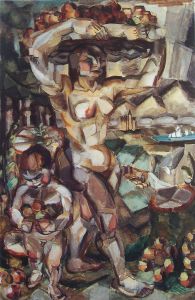
Navigating the inferior function with increasing skill aids Banks and Donnelly not only in establishing communication with the heptapods but also with the unconscious itself, illustrating von Franz’s (1971/2006) observation:
In the realm of the inferior function there is a great concentration of life, so that as soon as the superior function is worn out—begins to rattle and lose oil like an old car—if people succeed in turning to their inferior function they will rediscover a new potential of life. Everything in the realm of the inferior function becomes exciting, dramatic, full of positive and negative possibilities. There is tremendous tension and the world is, as it were, rediscovered through the inferior function. (p.15)
On a level deeper than her type’s resistance to Se, Banks’ experience of her daughter’s death—holding her in the bed, caressing her bald head, cradling her lifeless body—utterly overpowered her. Von Franz (1971/2006) added that “an introvert who wants to assimilate his inferior function must relate to outer objects, bearing in mind that they are symbolic” (p. 11). As Banks probes her Se, relating to and deciphering the language of Abbott and Costello (as she and Donnelly now refer to the heptapods), connecting with them from her humanity and feeling, she is also led into the painful territory of memories of losing her daughter. In type terms, this shift can be viewed as moving from Se to Si, from Banks’ inferior function to the archetypal depths of the demonic, Beebe’s eighth position. And yet, the embrace of the inferior is also helping her form a symbolic image for the death, thus releasing Banks not only into her own healing, but also augmenting her ability to save the world. This image begins to knit together in the tapestries of time that are spinning about in her mind, much like the new, cyclical language she is assimilating. Her acceptance arrives in the paradoxical knowing that even though she comprehends that she will experience losing her daughter again, she will without hesitation choose the wonder of “once again” knowing her. As Hillman (1992) clarified, engaging in imaginal, mythical ways is a fruitful process unto itself:
We hover in puzzlement at the border where the true depths are. Rather than an increase of certainty there is a spread of mystery, which is both the precondition and the consequence of revelation. Therefore the more clearly I see the myth that is taking place in the events I am psychologizing, the more mysterious and enigmatic they become, even as they become more and more revealed. (pp. 142-143)
As Banks penetrates the mysteries and gifts of her inferior function, psychological healing is taking place: she is coming to terms with the mythopoetic facets of death itself. Abbott and Costello guide her toward the ultimate gift of her awakening, a renaissance of conscious participation in a timeless universe. This alchemical coalescence of Ni, Se, and Si, the heroic, inferior, and demonic, is creating something larger than the sum of its parts—a profound revelation.
INFJ: Gateway to the Universal

Endings …and Beginnings…
What are the greater implications for us all? Arrival offers its audience an opportunity to engage with a relatively rare pattern of psychological functions given life in the character of Banks. It reveals a roadmap for engaging with the “other,” be it another gender, sexuality, religion, race, culture, or the unexplored dimensions of one’s unconscious. Such engagement is easier said than done. But ignoring the “other” is no longer a viable option either. In discussing the terrible challenge of living or not living with the fourth, inferior function, von Franz (1971/2006) wrote:
So what does one do? At that moment this alchemical recipe comes into place: namely, the effort to deal with the fourth function by putting it into a spherical vessel, by giving it the possibility of a fantasy expression, whether in writing or painting or dancing or in any other form of active imagination. Jung found that active imagination was practically the only means for dealing with the fourth function. (p. 77)
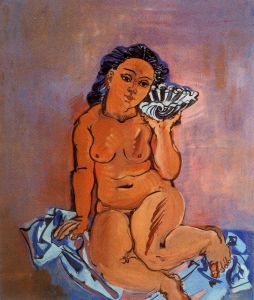
Clearly, the film as a whole can be argued as visionary in nature and an example of INFJ art itself. For some, the present chaos is too much to bear. For others, this extraordinary moment of interpersonal, environmental, and global urgency is summoning the bold to act, to hold, to tend to interiority, that vast frontier so well-traveled by the INFJ, as a means of cradling the soul of the world. It is possible to touch the alchemical essence, to ritually understand the fifth and transcendent function, the function that shimmers in magic and wonder. Demons can become daimons.Visionaries of the past have pointed the way, artistically inspiring the future into vibrant manifestation. The cosmic longing, the call of the unconscious, can not only be invoked, but felt. Rilke (as cited in Polikoff, 2011, p. 476) poignantly described the genius of relating to the unknowable:
that thing
which, cosmic and earthly like a meteor
collects heaviness solely from the sum,
of its flight, weighing nothing but arrival.
May those with the propensity to engage the unconscious be blessed in their creative and humane endeavors for relating to the numinous image.
References
Haas, L., & Hunziker, M. (2014). Building blocks of personality type: A guide to discovering the hidden secrets of the personality type code. Charlotte, VT: Eltanin Publishing.
Heisserer, E. (2015, August 20). Screenplay for Arrival. Retrieved October 1, 2017, from http://paramountguilds.com
Hillman, J. (1992). Revisioning psychology. New York: HarperCollins.
Hobson, J. (2017). Dave Eggers picture book Her Right Foot teaches kids about immigration. In National Public Radio, Here and Now [Audio podcast]. NPR.
Jung, C. G. (1921/1971). Psychological types (R. F. C. Hull, Trans.) (H. Read et al., Eds.), The collected works of C. G. Jung (Vol. 6). Princeton, NJ: Princeton University Press.
Osmond, H., Siegler, M., & Smoke R. (1977). Typology revisited: A new perspective. Psychological Perspectives, 8(2), 206-219.
Polikoff, D. J. (2011). In the image of Orpheus: Rilke: A soul history. Wilmette, IL: Chiron.
Sharp, D. (1987). Personality types: Jung’s model of typology. Toronto, Canada: Inner City Books.
Shumate, C. (2017). The function-archetype decoder. Jung’s eightfold way. Unpublished manuscript. Adapted with permission from McAlpine, R., Shumate, C., Evers, A., & Hughey, D., The function-archetype decoder [software program], 2009; Louisville, KY: Type Resources.
Villeneuve, D. (2016). Arrival [Motion picture]. Paramount Pictures.
von Franz, M. L. (1971/2006). In J. Hillman & M-L. von Franz, Lectures on Jung’s typology (pp. 1-88). Putnam, CT: Spring Publications.
Images
Chagall, M. (1918). Over the town. Retrieved from www.sartle.com
Ciurlionis, M. (1905). Serenity. Retrieved from commons.wikimedia.org
De Chirico, G. (1918). Vast metaphysical interior. Retrieved from wikiart.org
Dufy, R. (1933). Nude with seashell. Retrieved from wikiart.org
Le Fauconnier, H. (1910). Abundance. Retrieved from upload.wikimedia.org
Roerich, N. (1907). Earth paternoster. Retrieved from wikiart.org
Swaminathan, J. Unknown date. Journey I. Retrieved from wikiart.org


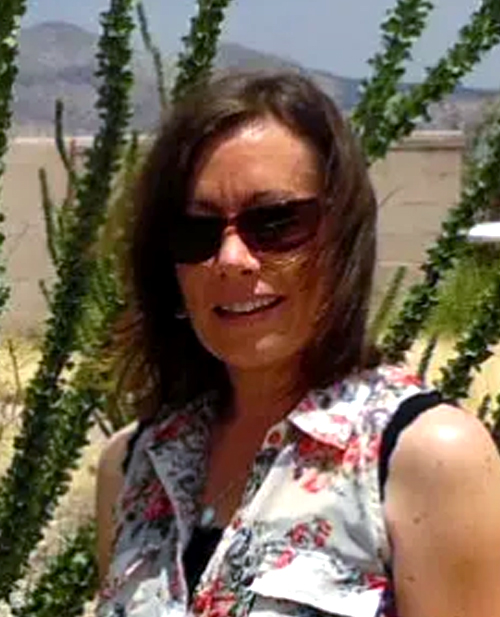
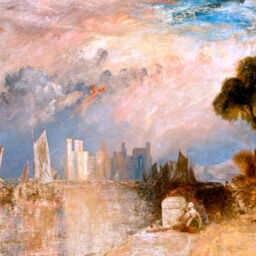
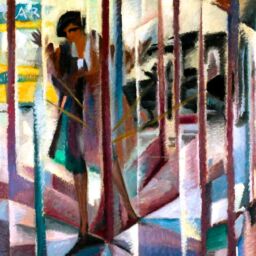

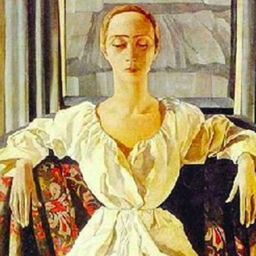


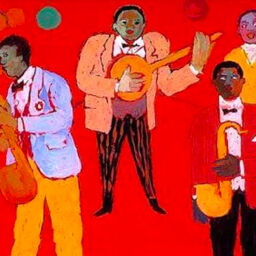





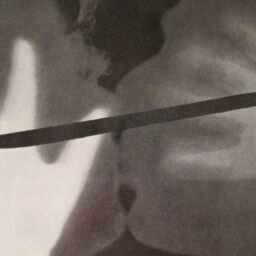


Hi Carol,
Indeed. The Lazarus poem is especially poignant in light of recent events.
On one level, it can feel so overwhelming. What to do? And yet, I keep returning to the sense that when we each embrace the “wretched refuse” of our own unconscious material, as we brave acceptance and integration in the interior spaces, our influence in the material world can THEN truly be felt.
Thank you,
Lori
Your article, and the recent brouhaha about immigration and “the ___ countries” put me in mind of the poem inscribed on the base of Lady Liberty’s statue:
Give me your tired, your poor,
Your huddled masses yearning to breathe free,
The wretched refuse of your teeming shore.
Send these, the homeless, tempest-tost to me,
I lift my lamp beside the golden door!
—Emma Lazarus (November 2, 1883)
Thank for putting this all into a new and enlightening context for us.